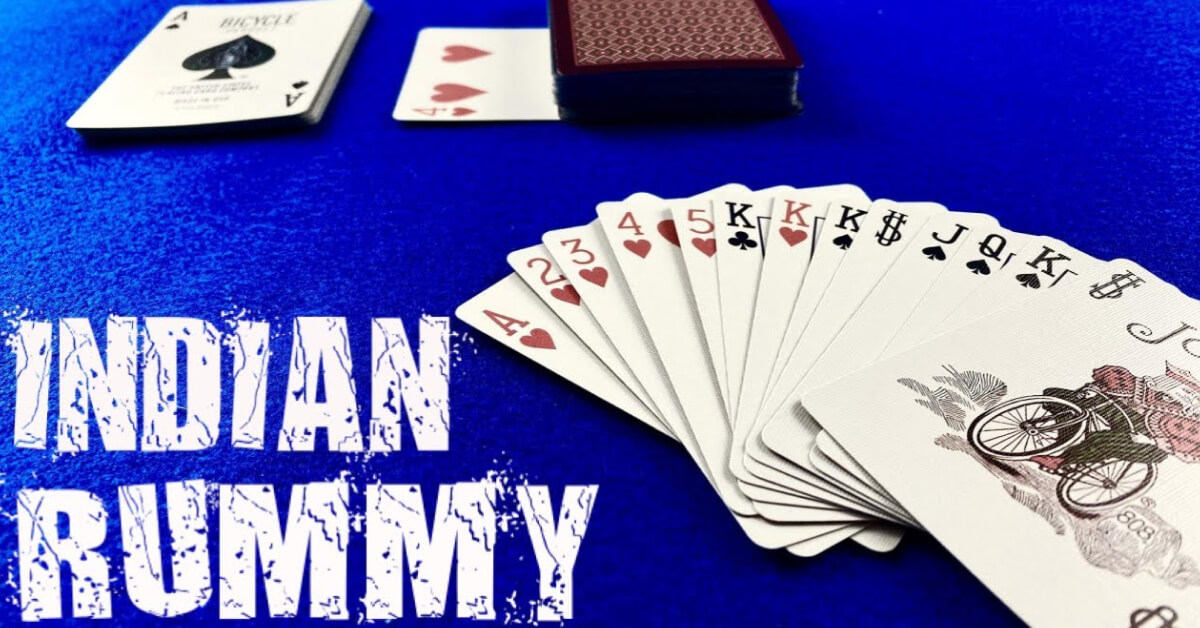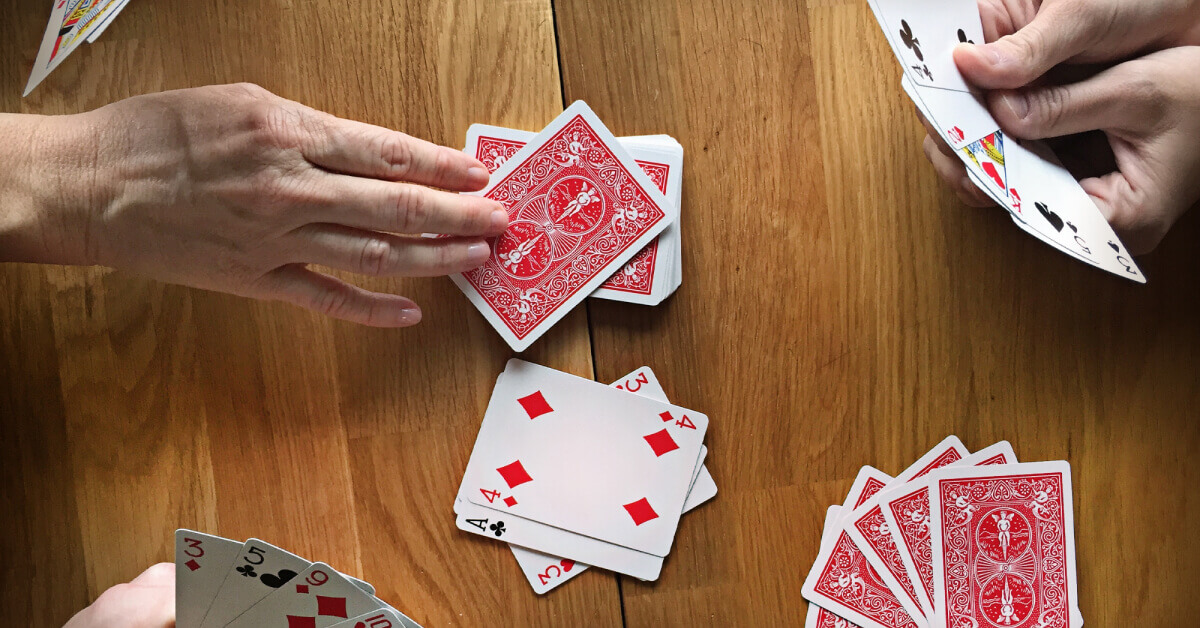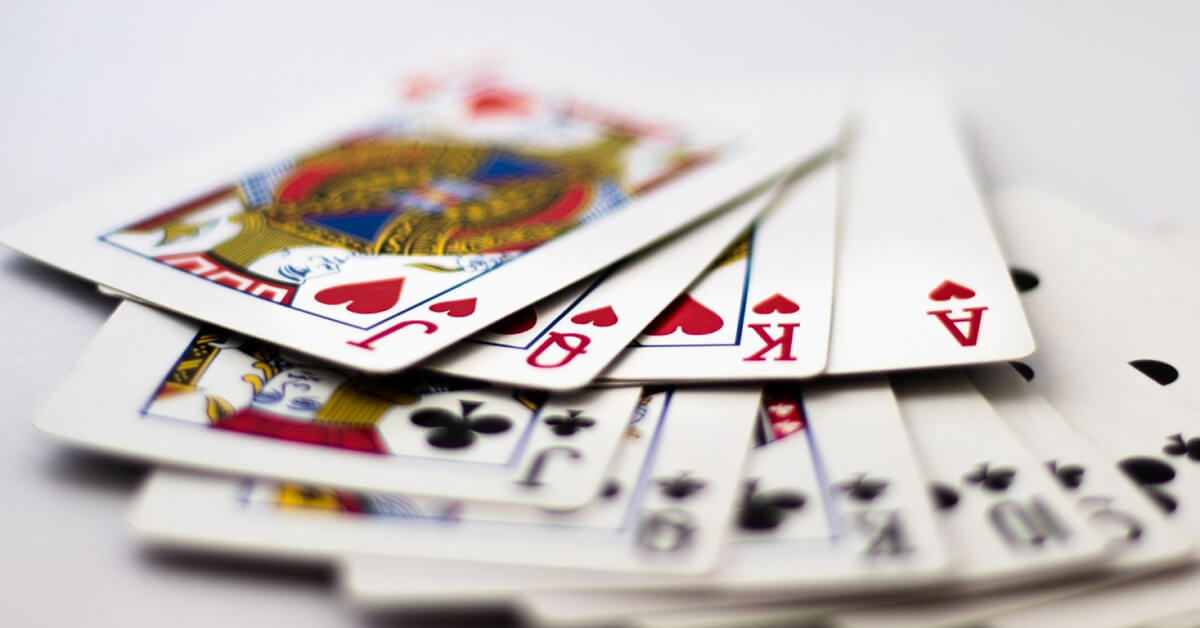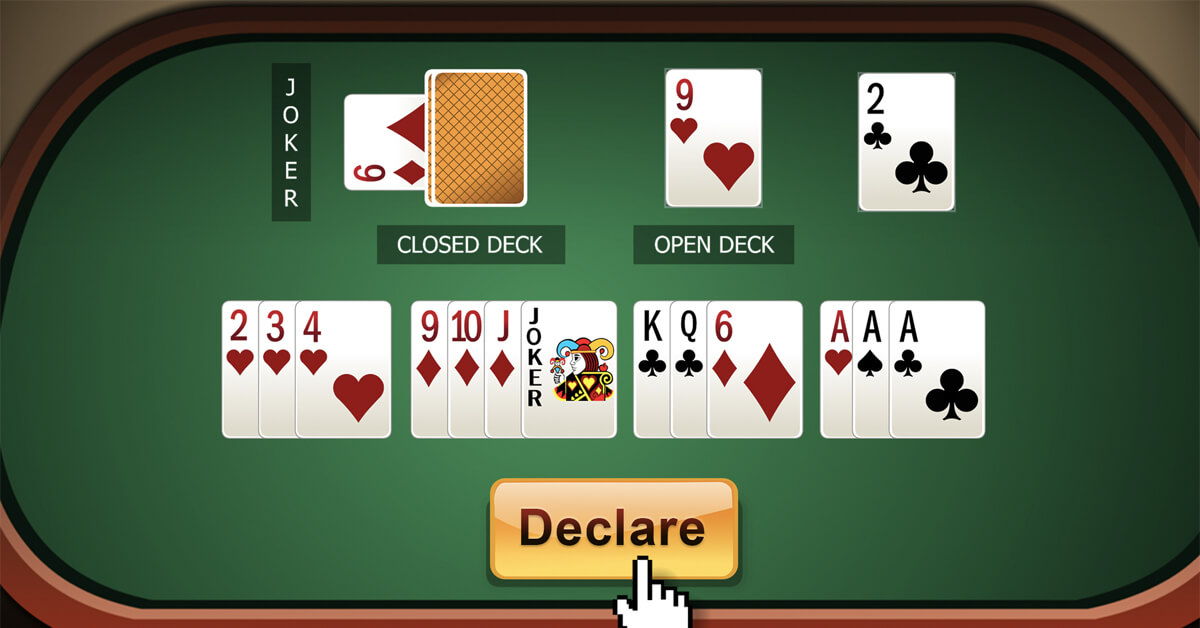India is a land of diverse cultures and traditions, and it comes as no surprise that the country has a rich history of traditional games. One such game that has been enjoyed by generations is Indian Rummy. It is a popular card game that combines skill, strategy, and a touch of luck, making it a favorite pastime for many Indians.
Indian Rummy, also known as Paplu or 13 Card Rummy, is a variant of the original Rummy game that originated in the United States. However, Indian Rummy has its unique rules and gameplay, which sets it apart and adds an exciting twist to the game.
In recent years, Indian Rummy has gained popularity beyond traditional offline settings. Online platforms and mobile apps have made it accessible to a wider audience, allowing people to enjoy the game anytime and anywhere. These platforms offer a seamless gaming experience, providing opportunities to play with friends, family, or other players from around the world.
Indian Rummy is more than just a card game; it is a part of India’s cultural fabric. It brings people together, encourages social interaction, and creates memorable moments of laughter and camaraderie. Whether played during festive occasions, family gatherings, or leisurely evenings, Indian Rummy continues to be cherished by people of all ages.
Rules of Indian Rummy
The rules of Indian Rummy, also known as Paplu or 13 Card Rummy, may vary slightly depending on the region or the specific variation being played. However, the following are the standard rules that are commonly followed:

- Number of Players: Indian Rummy is typically played with 2 to 6 players.
- Deck of Cards: The game is played with a standard deck of 52 cards without jokers. However, two printed jokers and wild card jokers are used during gameplay.
- Card Values: In Indian Rummy, the cards have specific point values. Face cards (King, Queen, and Jack) are worth 10 points each, and all other cards have their face value (Ace is worth 1 point).
- Dealing the Cards: Thirteen cards are dealt to each player, one at a time in a clockwise direction. The remaining cards are placed face-down to form the closed deck, and the top card is placed face-up to start the open deck.
- Sets and Sequences: The objective of the game is to form valid sets and sequences with the cards in hand. A set consists of three or more cards of the same rank but different suits (e.g., 7 of Spades, 7 of Hearts, 7 of Diamonds). A sequence is a group of three or more cards of the same suit in consecutive order (e.g., 4, 5, 6 of Clubs).
- Jokers: Two types of jokers are used in Indian Rummy. Printed jokers are randomly selected from the deck at the beginning of the game, and wild card jokers can be any card chosen by the player. Jokers can be used to substitute any other card to complete a set or sequence.
- Turns: The game begins with the player sitting to the left of the dealer. On their turn, a player can either pick a card from the closed deck or the open deck. After picking a card, the player must discard one card from their hand, placing it face-up on the open deck.
- Valid Declaration: A player can declare their hand when they have formed at least two sequences, including one pure sequence (a sequence without a joker). The remaining cards can be sets or sequences with or without jokers. Once a player declares, they must arrange their cards and show them to the other players.
- Points Calculation: If a player declares their hand, the other players add up the points of the cards remaining in their hands. Face cards (King, Queen, and Jack) are worth 10 points each, and all other cards have their face value. The player who declared with the least points wins the game.
- Dropping: If a player feels they have a poor hand and minimal chances of winning, they can choose to drop from the game. There are two types of drops: First Drop (before making the first move) and Middle Drop (during the game). Players who drop receive a certain penalty of points.
- Reaching the Point Limit: The game can also be played with a predetermined point limit. If a player accumulates points equal to or more than the limit, they are eliminated from the game.
These are the basic rules of Indian Rummy. Remember that there may be variations in specific rules or scoring systems, so it’s always a good idea to clarify any house rules before starting a game. Enjoy playing Indian Rummy and may the best strategist win!
How to Play Indian Rummy
To play Indian Rummy, follow these step-by-step instructions:

- Number of Players: Indian Rummy is typically played with 2 to 6 players.
- Deck of Cards: Use a standard deck of 52 cards without jokers. However, two printed jokers and wild card jokers are used during gameplay.
- Dealing the Cards: Thirteen cards are dealt to each player, one at a time in a clockwise direction. The remaining cards are placed face-down to form the closed deck, and the top card is placed face-up to start the open deck.
- Objective: The goal of Indian Rummy is to arrange your cards into valid sets and sequences.
- Sets and Sequences: A set consists of three or more cards of the same rank but different suits (e.g., 7 of Spades, 7 of Hearts, 7 of Diamonds). A sequence is a group of three or more cards of the same suit in consecutive order (e.g., 4, 5, 6 of Clubs).
- Jokers: Two types of jokers are used in Indian Rummy. Printed jokers are randomly selected from the deck at the beginning of the game, and wild card jokers can be any card chosen by the player. Jokers can be used to substitute any other card to complete a set or sequence.
- Turn Sequence: The game begins with the player sitting to the left of the dealer. Each player takes turns in a clockwise direction.
- Drawing and Discarding: On your turn, you have two options:
- Draw a Card: You can either pick a card from the closed deck (top card facedown) or the open deck (top card face-up). To pick a card from the open deck, you must also pick the topmost card from the closed deck along with it.
- Discard a Card: After picking a card, you must select one card from your hand to discard. Place it face-up on the open deck. The discarded card is now available for other players to pick.
- Arranging Cards: As you draw and discard cards, arrange them in your hand. Group them into sets and sequences. Keep track of the jokers and their potential use to complete sets and sequences.
- Valid Declaration: Once you have formed at least two sequences, including one pure sequence (a sequence without a joker), you can declare your hand. Arrange your cards and show them to the other players. Remember, you must have all your cards in valid sets and sequences to declare.
- Points Calculation: If you declare, the other players add up the points of the cards remaining in their hands. Face cards (King, Queen, and Jack) are worth 10 points each, and all other cards have their face value. The player who declared with the least points wins the game.
- Dropping: If you have a poor hand and minimal chances of winning, you can choose to drop from the game. There are two types of drops: First Drop (before making the first move) and Middle Drop (during the game). Players who drop receive a certain penalty of points.
- Reaching the Point Limit: The game can also be played with a predetermined point limit. If a player accumulates points equal to or more than the limit, they are eliminated from the game.
How to Win Indian Rummy
To increase your chances of winning in Indian Rummy, consider the following strategies

- Focus on Pure Sequences: A pure sequence is a sequence without any jokers. It is crucial to form at least one pure sequence early in the game, as it ensures that even if you don’t win, you won’t accumulate many points. Try to prioritize creating a pure sequence using natural cards.
- Create Sets and Sequences: Aim to create valid sets (three or more cards of the same rank but different suits) and sequences (three or more cards of the same suit in consecutive order). Look for opportunities to meld cards into sets and sequences while discarding cards that are unlikely to be of use to you.
- Utilize Jokers Wisely: Jokers are valuable in Indian Rummy as they can substitute any card to form a set or sequence. Be strategic in using jokers to complete sets or sequences. Save wild card jokers for critical situations when you are close to declaring your hand.
- Observe Discarded Cards: Pay close attention to the cards being discarded by other players. This can provide valuable insight into their hand and their strategies. If you notice a particular card being discarded frequently, it may indicate that it is of no use to other players, and you can safely discard it as well.
- Avoid Hoarding Cards: It’s generally not advisable to hold onto too many cards for too long. Continuously assess the cards in your hand and discard those that are unlikely to be of use. Hoarding cards can lead to a high point count if another player declares their hand.
- Keep Track of Opponents: Observing your opponents’ moves and the cards they pick or discard can give you an idea of their hand and help you adjust your strategy accordingly. Keep track of the cards they are melding and try to gauge their progress in the game.
- Calculate Probabilities: Develop the ability to calculate probabilities and assess the likelihood of obtaining the cards you need. This can help you make informed decisions about drawing cards from the closed or open deck, as well as deciding which cards to discard.
- Be Mindful of Points: If you are unable to declare your hand, focus on minimizing the point count of the cards left in your hand. Discard high-value cards like face cards (King, Queen, and Jack) early on to reduce your point total.
- Adapt to Changing Situations: Indian Rummy is a dynamic game, and the cards you receive may not always align with your initial plans. Stay flexible and adapt your strategy based on the cards you have and the actions of other players.
- Practice and Experience: Like any skill, practice and experience play a significant role in improving your game. The more you play Indian Rummy, the better you will become at recognizing patterns, making quick decisions, and formulating effective strategies.
What is The Benefits of Indian Rummy
Indian Rummy, beyond being an entertaining card game, offers several benefits to players. Here are some of the key advantages:
- Cognitive Skills: Playing Indian Rummy enhances various cognitive skills. It improves memory as players need to remember the cards that have been picked and discarded throughout the game. It enhances concentration and focus as players analyze the game situation, plan their moves, and keep track of opponents’ actions. The game also sharpens decision-making skills as players must make strategic choices regarding which cards to pick, discard, or use as jokers.
- Logical Thinking: Indian Rummy promotes logical thinking and problem-solving abilities. Players need to analyze the possibilities and combinations of cards in their hand to form valid sets and sequences. They must evaluate the probabilities of obtaining specific cards and make decisions based on logical reasoning. This fosters analytical thinking and logical problem-solving skills.
- Planning and Strategy: Indian Rummy is a game that requires careful planning and strategic thinking. Players must plan their moves in advance, considering the cards they have, the cards they need, and the cards being picked and discarded by opponents. They need to formulate strategies to minimize points, create opportunities for melding cards, and use jokers effectively. This cultivates strategic planning abilities and the capacity to think ahead.
- Social Interaction: Indian Rummy is often played in social settings, such as during family gatherings or friendly get-togethers. The game encourages social interaction, communication, and bonding among players. It provides a platform for shared experiences, laughter, and friendly competition, fostering positive relationships and creating memorable moments.
- Stress Relief: Playing Indian Rummy can serve as a stress-relieving activity. Engaging in the game allows players to divert their attention from daily stresses and immerse themselves in a recreational and enjoyable experience. It provides a mental break and an opportunity to relax, have fun, and rejuvenate the mind.
- Entertainment and Recreation: Indian Rummy is an engaging and entertaining game that offers hours of recreational enjoyment. Whether played offline with friends and family or online with players from around the world, the game provides a source of entertainment and amusement. It serves as a pleasant pastime, particularly during leisurely evenings or festive occasions.
- Multigenerational Appeal: Indian Rummy is a game that can be enjoyed by people of all ages. It transcends generational boundaries, making it a popular choice for family gatherings and bringing different generations together. It provides a common ground for interaction, bonding, and shared experiences across different age groups.
- Skill Development: Indian Rummy is a skill-based game that rewards strategic thinking, observation, and decision-making. Regularly playing the game allows individuals to develop and refine these skills over time. With practice, players can improve their gameplay, increase their understanding of the game’s dynamics, and enhance their overall skill set.
In conclusion, Indian Rummy is a classic card game that has stood the test of time. With its blend of skill, strategy, and excitement, it continues to




